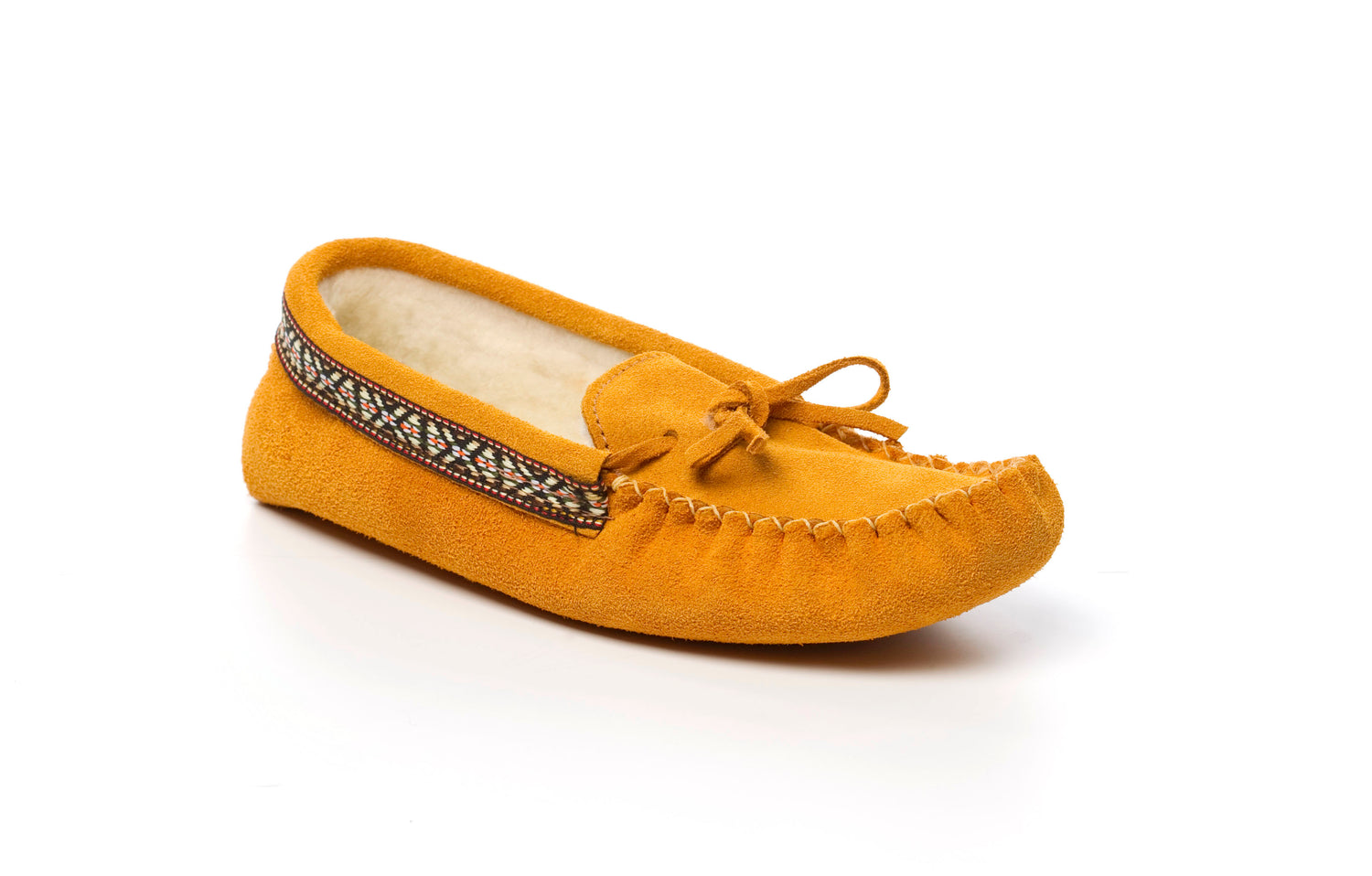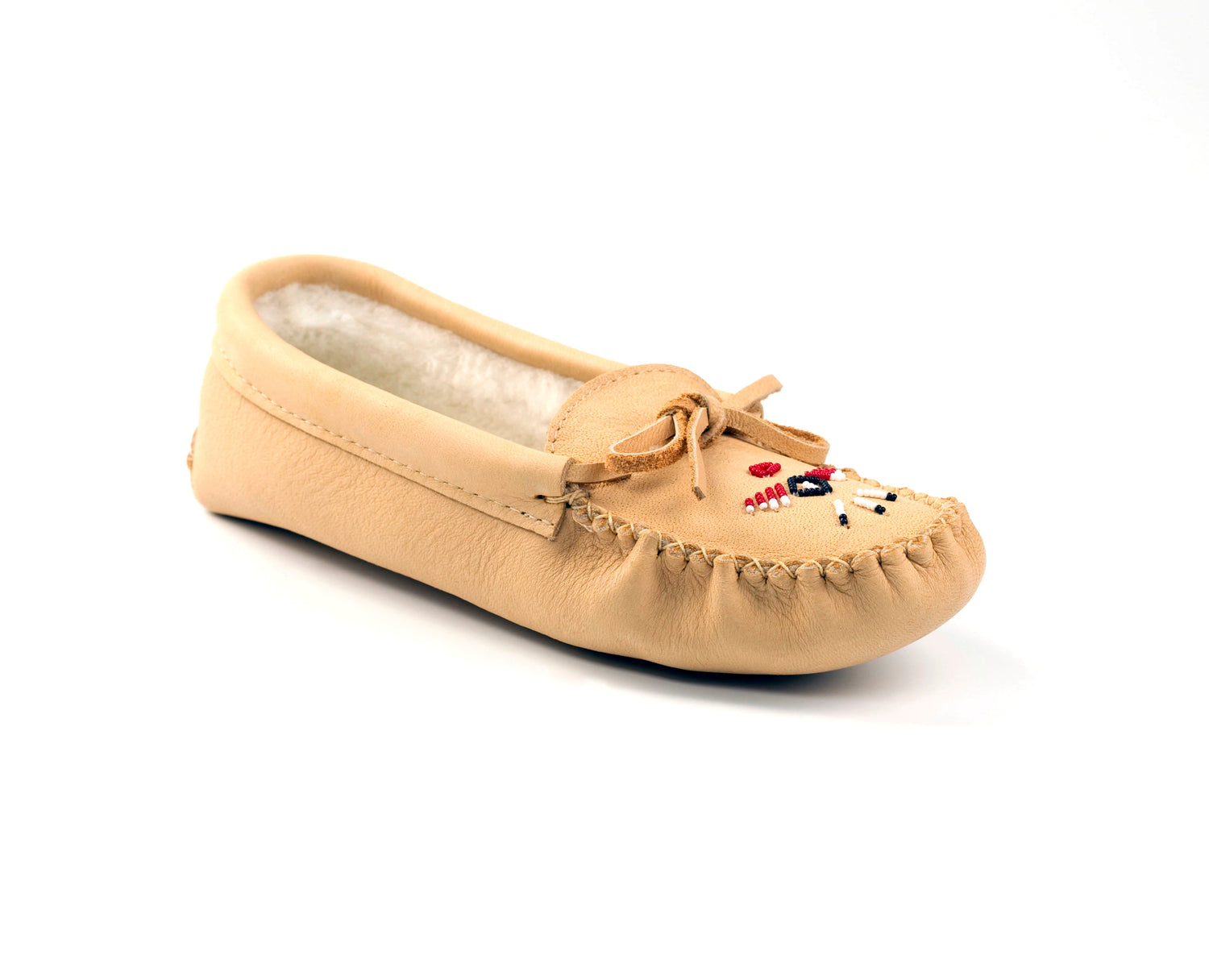
Stepping Through Time: The Moccasin's Journey 👣
Share
Stepping Through Time: The Moccasin's Journey 👣
Moccasins are more than just footwear; they are a living piece of history, an enduring testament to Indigenous ingenuity and a perfect fusion of form and function. From their ancient origins as a practical necessity to their modern-day status as a symbol of natural comfort and style, the moccasin's journey is one of continuous evolution. This article will explore how to select the ideal moccasin for different surfaces, delve into the evolution of the sole, and examine how various linings were used to adapt to the diverse North American climates.
The Art of Sole Selection
The sole of a moccasin is its most defining and functional feature, and its construction was historically tailored to the specific terrain. The original moccasin was made from a single piece of hide wrapped around the foot, allowing the wearer to feel the ground for quiet, stealthy movement. This "barefoot-like" sensation was essential for hunting and navigating natural landscapes.
For soft, leafy forest floors, like those found in the Eastern Woodlands, soft-soled moccasins were the perfect choice.Made from a single piece of supple leather, they provided silent footing and maximum flexibility. Today, these soft-soled versions are a popular choice for indoor slippers as they offer a luxurious, comfortable, and cozy feel for relaxed evenings and mornings at home.
In contrast, the rugged landscapes of the Great Plains, with their rocky ground and cacti, demanded a more durable design. The Plains Indians developed hard-soled moccasins, which featured a separate, tougher piece of rawhide or tanned bison leather sewn to the bottom. This provided essential protection and durability for walking on unforgiving surfaces. Modern moccasins for outdoor wear often incorporate a durable rubber or crepe sole, mimicking the protective function of their hard-soled ancestors while providing better grip and longevity on modern surfaces like pavement and concrete.
When selecting moccasins today, consider your primary use:
- Indoor Use: Look for soft-soled moccasins with a plush lining. The Great Plains Rabbit Fur Moccasins, for example, are an ideal choice for indoor comfort with their double-padded sole and warm fleece lining.
- Outdoor Use: Opt for moccasins with a crepe or hard rubber sole. Driving moccasins are a modern example, featuring rubber "pebbles" on the sole and up the heel for superior grip and durability.
The Evolution of Moccasin Soles
The story of the moccasin sole is one of adaptation and innovation. Early soles were exclusively made from animal hides. The softness or hardness of the sole was determined by the hide used and the tanning process. For example, supple deerskin created a flexible, soft sole, while thicker rawhide from bison provided a rigid, hard sole.
Over centuries, as Indigenous communities interacted with European traders and settlers, new materials and techniques were incorporated. The advent of the fur trade saw moccasins become a staple for voyageurs and traders who appreciated their practicality. As their use expanded, so did their construction.
Today, the evolution of the sole has brought a variety of materials into play:
-
Leather: Still a classic, leather soles offer a natural, breathable feel. They are often used in handcrafted indoor moccasins or dressier styles.
-
Crepe Rubber: A modern material that offers a blend of comfort and durability. Made from a form of natural or synthetic rubber, crepe soles are known for their cushioned, shock-absorbent qualities. They are a great choice for light outdoor use.
-
Hard Rubber: For those who need maximum durability and traction, hard rubber soles are the go-to. They are waterproof, long-lasting, and provide excellent grip on a variety of surfaces.
Linings and the Climate Connection ❄️🔥
Just as the sole was designed for the surface, the lining was chosen for the climate. The diverse ecosystems of North America, from the frozen North to the arid Southwest, necessitated different interior materials to keep feet comfortable.
In the Subarctic and other cold regions, moccasins were often lined with insulating materials like rabbit fur, beaver fur, or sheepskin shearling. These linings provided superior warmth, protecting the wearer's feet from harsh, freezing temperatures. The exterior hide, often from moose or caribou, was also chosen for its thick, protective qualities.
Further south, in warmer climates, linings were less about insulation and more about comfort and breathability. Soft leather or simply the tanned hide itself was often sufficient. Some modern moccasins, especially those for warmer weather, are unlined or have a thin cotton or fleece lining for added comfort without the bulk of heavy fur.
The Great Plains Rabbit Fur Moccasins exemplify this tradition of warmth, featuring a soft fleece lining for coziness during the colder months, making them a contemporary nod to their fur-lined predecessors. The combination of supple suede and a warm lining makes for a shoe that's both durable and comfortable.
The next time you slip on a pair of moccasins, take a moment to appreciate the centuries of tradition and innovation that went into their creation. Each stitch, material, and design choice tells a story of adaptation, culture, and enduring comfort.




